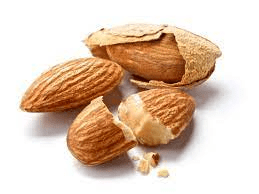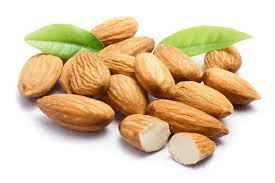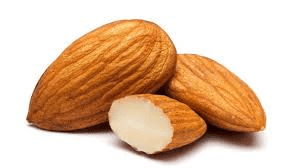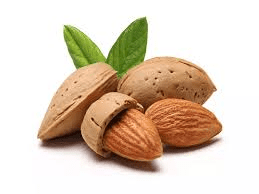Almond skin, also known as the almond pellicle, is the thin layer that covers the almond kernel or nut. It is typically brown in color and slightly bitter in taste. While the almond kernel is often the primary focus for culinary and nutritional purposes, the skin also has a number of interesting properties and benefits worth exploring.
Chemically, the almond skin is rich in polyphenols, specifically flavonoids and proanthocyanidins. These compounds are known for their antioxidant properties, which help to neutralize free radicals in the body that can cause cellular damage and contribute to chronic diseases. In fact, the concentration of polyphenols in the almond skin is even higher than that of the kernel itself.
In addition to its antioxidant properties, the almond skin also contains fiber, which can help to promote healthy digestion and regulate blood sugar levels. It also contains healthy fats, including monounsaturated and polyunsaturated fats, which are beneficial for heart health and can help to lower cholesterol levels.
While many people may choose to remove the almond skin when eating almonds, there are a number of culinary uses for the skin as well. For example, almond skin can be used to make almond flour, which is a gluten-free alternative to traditional wheat flour. It can also be used to make almond milk or added to smoothies for an extra boost of nutrition.
In the cosmetic industry, almond skin extract is often used as an ingredient in skincare products due to its antioxidant properties and potential benefits for reducing inflammation and improving skin texture. It may also have potential uses in the pharmaceutical industry for its anti-inflammatory and analgesic properties.
Overall, while often overlooked, the almond skin has a number of interesting properties and potential benefits worth exploring. Whether eating almonds whole or using the skin in culinary or cosmetic applications, it can be a valuable addition to a healthy and balanced lifestyle.
The Economic Importance and Uses of Almond Skin

Almond skin, also known as almond hulls or shells, is the outer layer of the almond fruit. While it is often discarded after the nut is harvested, it actually has a range of economic uses and benefits. Here are 18 examples of the economic importance and uses of almond skin:
1. Food production: Almond skin can be used in food production as an ingredient in baked goods, snacks, and other food products.
2. Animal feed: Almond skin can be used as an ingredient in animal feed, particularly for livestock and poultry.
3. Biofuel production: Almond skin can be converted into biofuel, which can be used as an alternative to fossil fuels.
4. Cosmetics: Almond skin extract and oil can be used in cosmetic products, particularly for their moisturizing and anti-aging properties.
5. Pharmaceutical industry: Almond skin extract can be used in the pharmaceutical industry as an ingredient in medicines and supplements.
6. Waste management: Almond skin can be used as a natural and biodegradable alternative to synthetic materials in waste management.
7. Soil amendment: Almond skin can be used as a soil amendment to improve soil quality and fertility.
8. Water filtration: Almond skin can be used in water filtration systems to remove impurities and contaminants from water.
9. Paper production: Almond skin can be used in paper production as a raw material for paper pulp.
10. Textile industry: Almond skin can be used in the textile industry as a natural dye for fabrics.
11. Art and crafts: Almond skin can be used in art and crafts as a material for sculptures, decorations, and other projects.
12. Renewable energy: Almond skin can be used in renewable energy production, particularly in biomass energy generation.
13. Building materials: Almond skin can be used in the production of building materials such as bricks and insulation.
14. Agriculture: Almond skin can be used as a natural pesticide and fertilizer in agriculture.
15. Landscaping: Almond skin can be used as a natural and decorative material in landscaping and gardening.
16. Composting: Almond skin can be composted and used as a natural fertilizer for plants and crops.
17. Biomass production: Almond skin can be used in biomass production to generate heat and electricity.
18. Carbon capture: Almond skin can be used in carbon capture and storage technology to reduce greenhouse gas emissions.
Read Also: The Curry Leaves: Economic Importance, Uses, and By-Products
The Products and By-products That Can Be Derived From Almond Skin

In addition to the economic uses listed above, almond skin can also be processed to produce a range of products and by-products. Here are 17 examples of the products and by-products that can be derived from almond skin, along with their examples and production processes:
1. Almond flour: Almond skin can be ground into flour, which can be used in baking and cooking.
2. Almond milk: Almond skin can be used to make almond milk, a popular dairy-free alternative to regular milk.
3. Almond oil: Almond skin can be pressed to extract almond oil, which is used in cooking, cosmetics, and other products.
4. Almond butter: Almond skin can be used to make almond butter, a popular spread for bread, crackers, and other snacks.
5. Almond extract: Almond skin can be used to make almond extract, which is used as a flavoring in baking and cooking.
6. Almond protein powder: Almond skin can be processed to produce almond protein powder, which is used in sports nutrition and other products.
7. Almond shell flour: Almond shells can be ground into flour, which can be used as a gluten-free alternative to regular flour.
8. Almond shell pellets: Almond shells can be compressed into pellets, which can be used as a fuel source in biomass energy production.
9. Almond shell charcoal: Almond shells can be converted into charcoal, which is used as a fuel source and in other applications.
10. Almond shell ash: Almond shells can be burned to produce ash, which can be used as a soil amendment and in other applications.
11. Almond shell briquettes: Almond shells can be compressed into briquettes, which can be used as a fuel source in biomass energy production.
12. Almond shell mulch: Almond shells can be used as a natural and decorative mulch for landscaping and gardening.
13. Almond shell biochar: Almond shells can be converted into biochar, which is used as a soil amendment and in other applications.
14. Almond shell vinegar: Almond shells can be used to make almond shell vinegar, which is used in cooking and other applications.
15. Almond shell syrup: Almond shells can be used to make almond shell syrup, which is used as a sweetener in cooking and other applications.
16. Almond shell tea: Almond shells can be used to make almond shell tea, which is believed to have health benefits.
17. Almond shell soap: Almond shells can be used to make almond shell soap, which is used for its moisturizing and exfoliating properties.
Read Also: 10 Medicinal Health Benefits Of Capsicum Annuum (Paprika)
Frequently Asked Questions (FAQ’s) About Almond Skin

Here are 10 frequently asked questions about almond skin, along with their answers:
1. What is almond skin?
Almond skin is the outer layer of the almond fruit, which is often discarded after the nut is harvested.
2. What are the economic uses of almond skin?
Almond skin has a range of economic uses, including food production, animal feed, biofuel production, cosmetics, and more.
3. What products can be derived from almond skin?
Almond skin can be processed to produce a range of products and by-products, including almond flour, almond milk, almond oil, and more.
4. Is almond skin safe to eat?
Almond skin is safe to eat and is actually a rich source of nutrients, including fiber and antioxidants.
5. Can almond skin cause allergies?
Some people may be allergic to almond skin, particularly those with nut allergies. It is important to check with a doctor before consuming almond skin or products derived from almond skin.
6. How is almond skin processed to produce almond oil?
Almond skin is typically cold-pressed to extract almond oil, which is then refined and filtered to remove impurities.
7. Can almond skin be used in composting?
Yes, almond skin can be composted and used as a natural fertilizer for plants and crops.
8. What are the environmental benefits of using almond skin?
Using almond skin as a raw material or ingredient in various products can help reduce waste, conserve natural resources, and lower greenhouse gas emissions.
9. Where can I buy almond skin products?
Almond skin products can be found in health food stores, online retailers, and some grocery stores.
10. Is almond skin biodegradable?
Yes, almond skin is biodegradable and can be used as a natural and sustainable alternative to synthetic materials in various applications.
Read Also: Managing Electronic Waste to Ensure Green Computing

